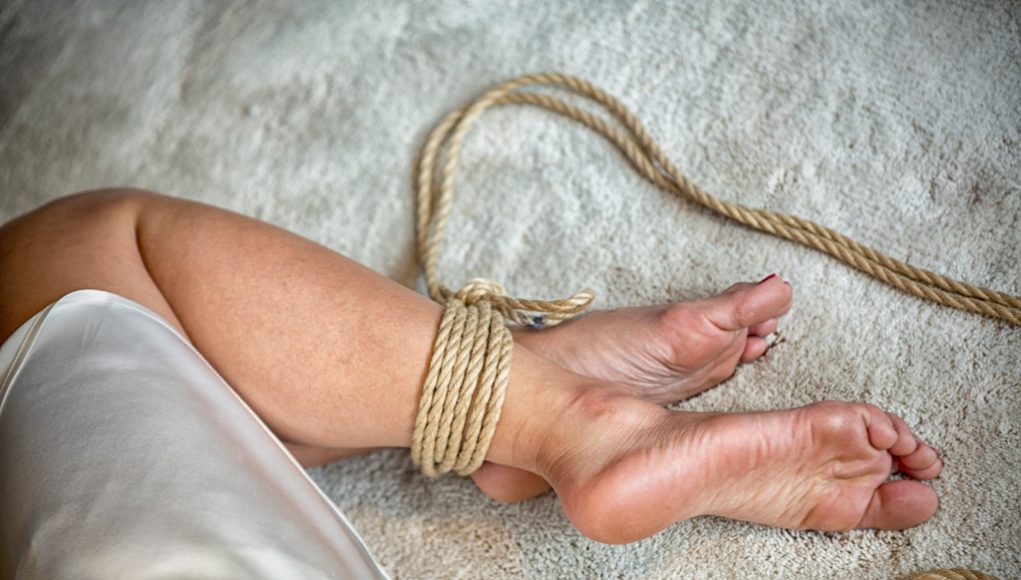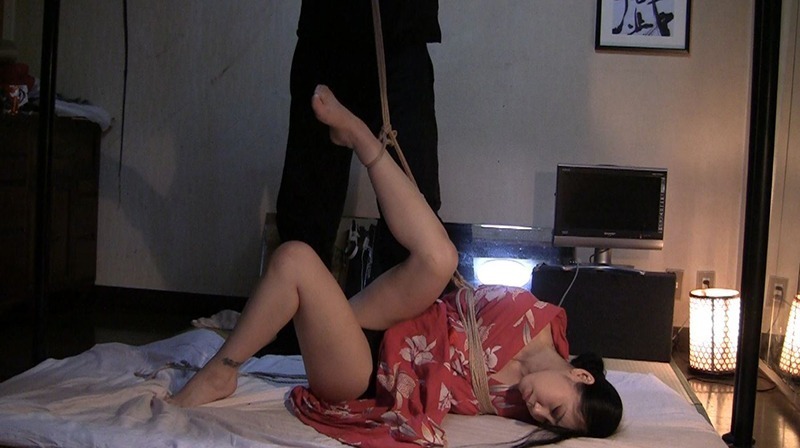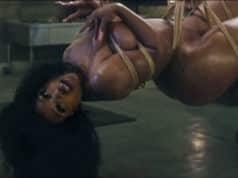 Recently we have witnessed the emergence of BDSM and kinky sex into mainstream culture. Thanks to works such as 50 Shades of Grey selling more than 100 million copies and becoming a feature film, kinky has become more popular than ever before.
Recently we have witnessed the emergence of BDSM and kinky sex into mainstream culture. Thanks to works such as 50 Shades of Grey selling more than 100 million copies and becoming a feature film, kinky has become more popular than ever before.
As kink and BDSM have become more mainstream, a la 50 Shades of Grey, people are across the globe are looking for new and interesting ways to expand their sexual horizons.
One of the places people are looking is toward Japan, long seen as a source of kink and fetish inspiration, one area that has really taken off is the traditional art of Japanese rope bondage. Known as kinbaku or shibari, the practice of Japanese erotic rope bondage has roots in martial arts, kabuki theater, and even Edo era torture. Today, however, the art has been transformed into everything from techniques for erotic play to dazzling stage performances.
At LA Rope, we bring the fundamentals of kinbaku to adventurous couples who are looking to add something special to their relationship. Kinbaku is not just about rope and knots. The heart of doing kinbaku is the trust, communication and connection that happens between partners. More than a decade ago, Akechi Denki, one of Japanese most legendary rope masters described it this way:
Kinbaku is activity for two like-minded hearts and must always be a loving exchange.
 For those looking to venture into the art of kinbaku, we would like to offer a few things to look out for as you delve into the world of erotic rope bondage:
For those looking to venture into the art of kinbaku, we would like to offer a few things to look out for as you delve into the world of erotic rope bondage:
1. You can do a lot with just a little
Most people become fascinated with shibari after looking at pictures of complicated ties and suspensions. Those pictures offer a very dramatic view of what is possible with Japanese-style rope. While these are beautiful to look at, the real magic of kinbaku and shibari can happen with just a single rope. Learning how to use rope as a way to communicate with your partner can be much more fulfilling that even the most elaborate suspension or tie. Focus on that and you will have a lifetime of pleasure (and learning) ahead of you.
2. There are many, many ways to tie
Shibari has been developing since the 1600’s and has influences ranging from martial art to classical Japanese woodblock painting and from tea ceremonies to kabuki theater. Not surprisingly, there are a wide range of styles of schools of shibari, each with their own unique techniques and goals. Within the history and tradition of the art there is something for everyone. Take the time to explore and discover what is a good fit for you and your partner.
3. It is not about knots!
One of the most surprising things that people discover about kinbaku and shibari is that you use very few knots. Most of the ties we do use wrapping and the friction of the ropes themselves to create and maintain the ties. When it comes to knots, if you can tie your shoes, you probably already know everything you need to, knot-wise, to do most shibari. One of the most remarkable things about the art is the creativity and imagination that has gone into the creation of patterns over many decades (and in some cases centuries) or development.
4. Get the best instruction you can
Even 5 years ago, information about this art was hard to come by. It was practiced by a handful of people, many of whom were forced to learn from books, videos, and second-hand instruction. That is not true anymore. In the past few years, we have seen an explosion of teaching and learning opportunities, with many from the US traveling to Japan and many of the great Japanese rope masters coming to the US to provide workshops and lessons.
The most important reason to get hands on instruction from qualified teachers is safety. Many of the most dangerous aspects of erotic rope, such as nerve compression, are not always obvious and can cause serious problems. Knowing how to avoid “danger spots” and what to do if you run into trouble can be invaluable.
Most of the Japanese techniques have been developed to combine beauty, effectiveness and safety. But they aren’t without risks. The best thing you can do is seek out an experienced instructor and develop a good working knowledge of safety and kinbaku fundamentals.
5. Don’t forget to have fun!
Perhaps the most important piece of advice! The reason we all do this is to have fun and give and receive pleasure. Don’t let the complexity of the ties or a fear of “doing it wrong” get in the way of having a good time. Shibari and kinbaku can give you a lifetime of fun, pleasure, and learning.
We hope this short primer gives you some ideas about how you might think about adding Japanese erotic rope bondage to your relationship.
If you live in (or near) Los Angeles, please join us for classes, workshops, and socials at LA Rope, located in Koreatown. A full list of events and classes can be found at our website: http://34.220.101.164
About LA Rope
Founded in 2011, LA Rope is dedicated to providing safe and traditional training in the Japanese art of kinbaku. We offer regular classes, workshops, intensives, and events to help build the LA rope and kinbaku community. We have brought Grandmaster Yukimura Haruki and rope master Akira Naka to Los Angeles to offer seminars and workshops.
The dojo operates as an extension of two schools of Japanese kinbaku, the first created by Urato Hiroshi, rope master for many of the Japanese SM films of the 1970s and 1980s, as well as editor and publisher of SM magazines during the “Golden Age” of kinbaku publication. The second school is Yukimura Ryu, the style of kinbaku created by Grandmaster Yukimura Haruki.
Master K and Zetsu are the only licensed instructors of Yukimura Ryu (often refered to as “Newaza” or “Carressing Style”) in North America, each holding certificates (menkyo) certifying then as “Instructors First Class” in Yukimura’s style, an honor presented to them in person by Yukimura Sensei at his rope dojo in Ebisu.






